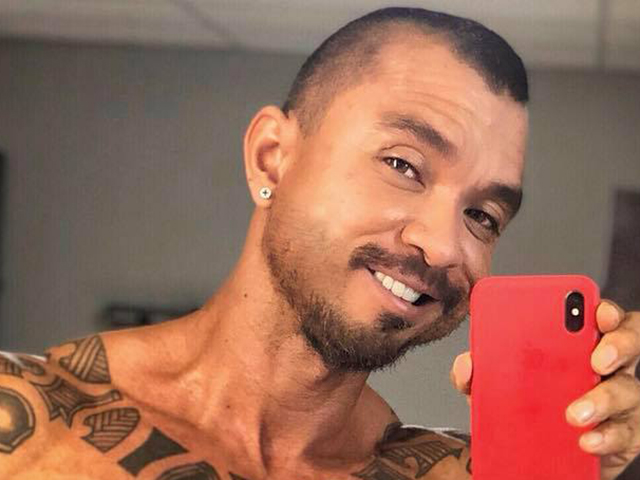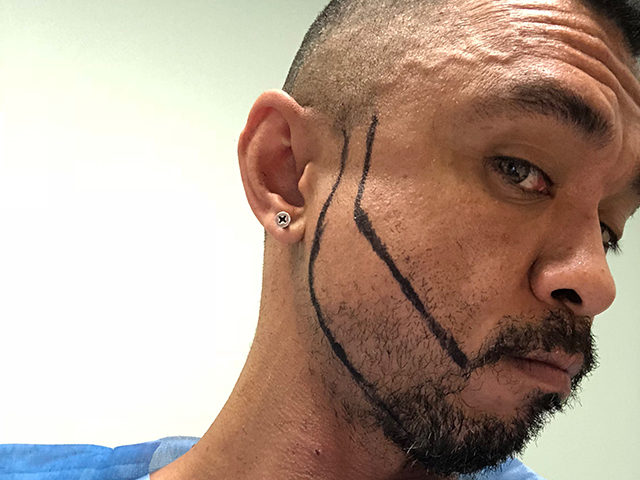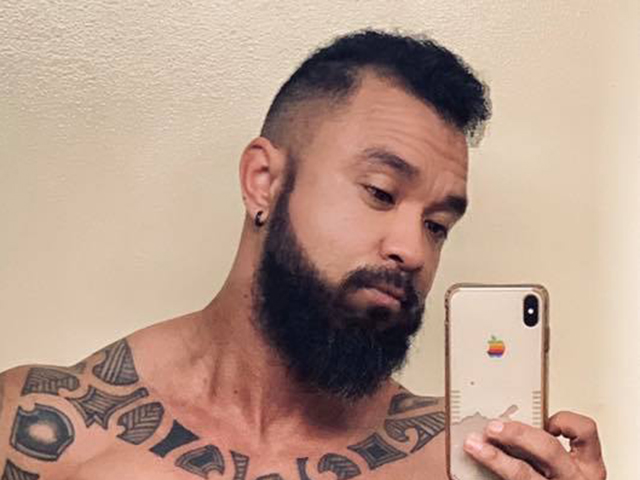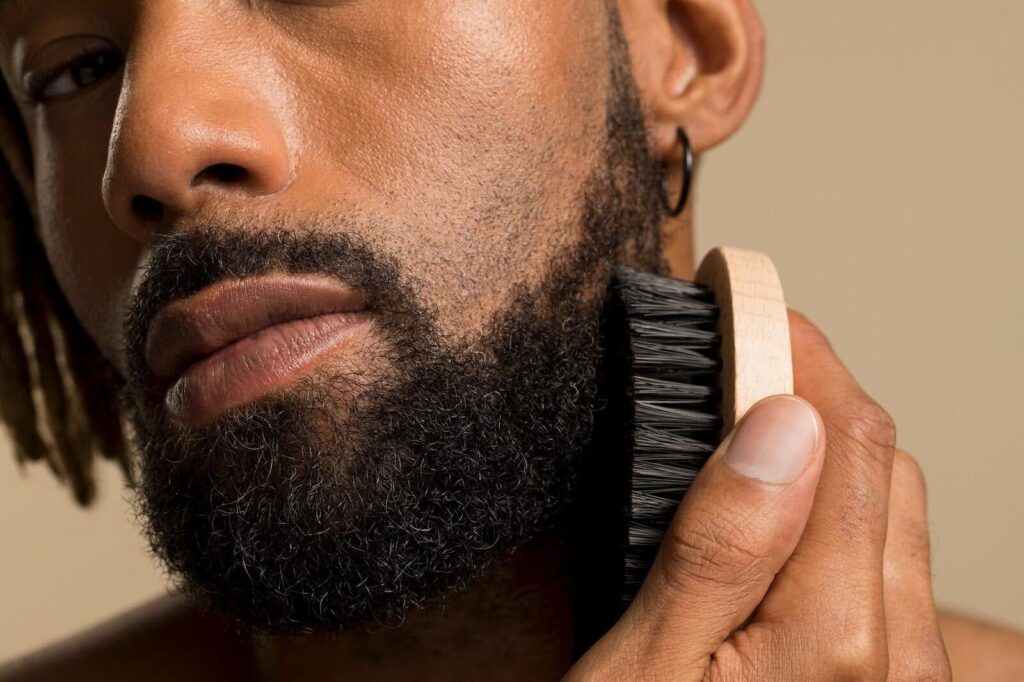If you have trouble growing a full beard, we have great news: Thanks to modern science and skilled hair transplant technicians, a full beard is totally within your reach.
Beards are certainly in fashion these days. While some men opt for a 3-day stubble, others prefer full facial coverage. Whichever style you choose, it’s hard to make it work when your growth is patchy. The condition of bald circular bald patches is called “alopecia barbae” and is actually quite common. And the best remedy by far is a beard transplant.
To see how beard transplants work, we’d like to introduce Nashville Hair Doctor patient Golden C. Here he is before his procedure:

You can see that while he does have a beard, his facial hair thins out considerably along the jaw and is almost nonexistent on his cheeks. Golden started looking for a solution because his “short and patchy” beard left him unsatisfied.
“For the longest time, I’d been unable to grow much of a full beard” ~ Golden C, Hair Doctor Patient
Enter Nashville Hair Doctor and NeoGraft technician Jay Corbett. After “much back and forth with myself,” Golden decided to do something about his beard. He was looking for a place close enough to home but also “with the best reviews” and settled on Nashville Hair Doctor, just one state away from his residence in Alabama.*
How a Beard Transplant Works
It’s actually very simple and not any different from a hair transplant on top of your head. The technique we use at Nashville Hair Doctor is called Follicular Unit Extraction, FUE for short. Before FUE was developed, doctors would remove an entire strip of scalp from the back of the patient’s head, which would leave a prominent scar. FUE on the other hand removes the hair from the donor area one graft at a time, leaving tiny little pricks that scab over and heal in less than a week without scarring.
It doesn’t matter that the donor hair is extracted from the scalp – it will do just fine as a beard. When the technician has harvested enough follicles, he or she places them into the previously identified facial area. Here it is important to achieve the correct density, direction, and angle for each follicle. A skilled technician with plenty of beard transplant experience will be able to achieve a completely natural look. Just like hair transplants, beard transplants are more work of art than medical procedure.
On the day of your beard transplant procedure, you will be given a mild sedative and a local anesthetic around the head. Here is our patient Golden again, ready for his procedure to begin:

Just like a hair transplant, a beard transplant is a rather lengthy procedure. But it’s not as lengthy as you might think, given that 2,000 or more hairs are moved individually. It can typically be accomplished in one day, and it’s fairly easy and comfortable.
“The procedure itself was long but professional and smooth.” ~ Golden C, Hair Doctor Patient
Imagine it like a really long appointment at the hairdresser. You might chit chat with the staff as they work, you might channel surf with the TV remote they give you, or you might even take a nap. That’s it.
After Your Beard Transplant
The recovery after a beard transplant does not take very long. Most patients are back to their normal routines within one or two days. As stated above, it will take up to 7 days for the extraction sites on your head to scab over and heal. Your doctor will give you post-op instructions about washing your hair and face to make sure that you take good care of the new follicles.
The new hair will actually fall out after a few weeks, but this is completely normal. It will then resume its growth with the regular hair growth cycle. After a few months, your new beard will begin to grow in.
It takes a bit of patience, but the results will be well worth it. The even better news is that your new beard will be permanent. Hair that is taken from the donor area at the back of the scalp is not susceptible to hair loss. This means that even if you experience hair loss on the top of your head, your beard will remain as full as ever.
While individual results may vary, we thought you might like to see Golden’s results – picture taken about 8 months after his beard transplant:

Find Out if You’re a Good Candidate
Have you considered a beard transplant and been unsure whether it’s the right thing to do? Or perhaps you haven’t found a provider who performs them, let alone achieves great results?
We are here to tell you that beard transplants work and that we’re here to help.
Get started now by uploading your picture to request a FREE quote!
*Results may vary from person to person and are not guaranteed

